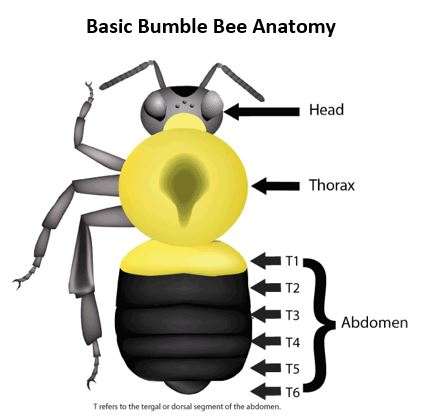June 2, 2022 at 5:10 pm
Maine Department of Inland Fisheries and Wildlife is looking for the federally Endangered Rusty Patched Bumble Bee and we need more eyes!
Bees are among the most important pollinators, pollinating 2/3 of the food we eat, ensuring food security and healthy ecosystems for both humans and wildlife. But some species are becoming rare or even extirpated. With a 90% decline in numbers and range since the 1990s, the Rusty Patched Bumble Bee (Bombus affinis) is the first bumble bee protected by the U.S. Endangered Species Act. It has not been seen in Maine since 2009, but we are hopeful it’s still out there somewhere. You can help us find it by carefully observing the bumble bees you see and learning how to distinguish the Rusty Patched from similar-looking Maine bumble bee species (it’s not hard!) If you think you’ve found one, snap one or more close-up and in focus photos (or a video to select the best photos) and submit them to either iNaturalist or Bumble Bee Watch where a group of experts will confirm the identification.
What to look for:
Because the Rusty Patched Bumble Bee is one of only a few species in Maine with rust coloring on its abdomen, that is the key feature you should look for. When looking at a bumble bee from the top or side, you will notice that the abdomen is divided into 6 or 7 segments, depending on the sex of the bumble bee. The color patterns and markings on the different segments are helpful in distinguishing one species from another.

In Rusty Patched Bumble Bees, the first two abdominal segments are yellow, and the rest of the abdomen is black (see photo below). This color pattern is quite similar to a few other Maine species, but the distinguishing characteristic is a rust-colored “patch” on the upper middle part of the second abdominal segment. Sometimes the patch is browner than rust-colored, but it is always confined to the second abdominal segment and bordered by yellow along the sides and bottom. (Only males and workers have this color pattern – queens do not have a rusty patch and are difficult to distinguish from other species without the aid of a microscope.)
Similar Species
There are three other species of bumble bee in Maine that have rust coloring on the abdomen, but with careful attention to detail you can learn to tell them apart.
Orange Belted or Tricolored Bumble Bee (B. ternarius)
This species is the most common and abundant bumble bee you will see with rust color on its abdomen, so you will quickly learn to recognize it. The key distinguishing feature of this bee is that both the second and third abdominal segments are completely orange or rust colored. The wide orange mid-section is bounded by a complete band of yellow above and below, and just the tip of the abdomen is black. Sometimes the orange color is very pale. This bee also has a distinct “V-shaped” black patch on its thorax (where the wings attach), where the Rusty Patched has more of a subtle “thumbtack-shaped” black patch between its wings.
Red Belted Bumble Bee (B. rufocinctus)
This species looks similar to the Orange Belted Bumble Bee but is uncommon in Maine, so you are not likely to come across it often. The key feature that distinguishes the Red Belted from the Rusty Patched is the rust coloring is typically confined to the third and fourth abdominal segments, which concentrates the rust on the lower half of the abdomen (vs. just the second abdominal segment). Even though rust color can sometimes be found on other segments, there is typically much more of it on the abdomen of a Red Belted than the isolated small patch on the Rusty Patched.
Brown Belted Bumble Bee (B. griseocollis)
This species is known primarily from the southern half of the state and is not a species that is frequently observed. Similar to the Rusty Patched, the Brown Belted also has a yellow first abdominal segment followed by a patch of rust, or more commonly BROWN, in the upper middle half of the second abdominal segment, with the rest of the abdomen being black. Unlike the Rusty Patched, the second abdominal segment is BLACK and so the brown patch is bordered by black instead of yellow on the sides and bottom.
Links for more information about identifying the Rusty Patched Bumble Bee:
University of Minnesota Bee Lab – Rusty-Patched Bumble Bee Identification
U.S. Fish & Wildlife Service – Bumble Bee ID: Is it a Rusty Patched Bumble Bee?
Xerces Society for Invertebrate Conservation – Rusty-Patched Bumble Bee
Bumble Bee Watch – Bumble Bee Anatomy
THANK YOU for keeping an eye out and reporting your Rusty Patched Bumble Bee sightings! Learn more about the Department’s work with invertebrates in the Reptile, Amphibian, and Invertebrate Conservation & Management Report.